Brief Biographies of the 60th Anniversary Speakers
Roger Bilham, Visiting Miller Professor, Fall 2004"Earthquakes and money: frail buildings, philanthropic engineers
|
Roger Blandford, Visiting Miller Professor, Fall 2013"The Miller Universe"
|
Ken Eisenthal, Visiting Miller Professor, Fall 1989"Lasers probing the world we live in"
http://www.columbia.edu/cu/chemistry/fac-bios/eisenthal/faculty.html |
Alice Guionnet, Visiting Miller Professor, Fall 2006"About Universal Laws"
|
L. “Maha” Mahadevan, Visiting Miller Professor, Spring 2006"Origami: Art, Science and Technology"
|
Ryosuke Motani, Miller Fellow, 1997-1999"What emerged after the Permo-Triassic global warming--marine
|
Sally Otto, Miller Fellow, 1992-1994"Genomic scope of Adaptive Mutations in the Face of Environmental Challenges"
|
Vijay Pande, Miller Fellow, 1996-1998"Fifteen years of Folding@home: How Citizen Science has
|







 Roger Bilham obtained degrees in Geology and Physics at the University of Wales, and in 1971 a PhD in geophysics from Cambridge University. Following post-doctoral studies in Cambridge and Columbia’s Lamont Doherty Earth Observatory, in 1986 he was appointed Professor of Geology at the University of Colorado, in Boulder. His research is focused on earthquake studies using geodetic monitoring methods, tilt-meters, strain-meters and creep-meters, supplemented by historical studies of earthquakes especially in India and the Himalaya. He has recently contributed to identifying societal complexities thwarting the application of earthquake-resistant design to urban construction in the developing nations. Among his many recognitions he is a Fellow of the American Geophysical Union and the Royal Geographical Society, London and the recipient of a Guggenheim Fellowship. In 2004 he visited Berkeley as a Visiting Miller Professor. In 2009 he was invited to give the 12th Mallet/Milne lecture (Inst Civil Engineers, London), in 2012 the Welsh Lecture in Physics (Toronto), and in 2015 the 20th W.S. Jardetzky Lecture (Columbia University).....
Roger Bilham obtained degrees in Geology and Physics at the University of Wales, and in 1971 a PhD in geophysics from Cambridge University. Following post-doctoral studies in Cambridge and Columbia’s Lamont Doherty Earth Observatory, in 1986 he was appointed Professor of Geology at the University of Colorado, in Boulder. His research is focused on earthquake studies using geodetic monitoring methods, tilt-meters, strain-meters and creep-meters, supplemented by historical studies of earthquakes especially in India and the Himalaya. He has recently contributed to identifying societal complexities thwarting the application of earthquake-resistant design to urban construction in the developing nations. Among his many recognitions he is a Fellow of the American Geophysical Union and the Royal Geographical Society, London and the recipient of a Guggenheim Fellowship. In 2004 he visited Berkeley as a Visiting Miller Professor. In 2009 he was invited to give the 12th Mallet/Milne lecture (Inst Civil Engineers, London), in 2012 the Welsh Lecture in Physics (Toronto), and in 2015 the 20th W.S. Jardetzky Lecture (Columbia University)..... 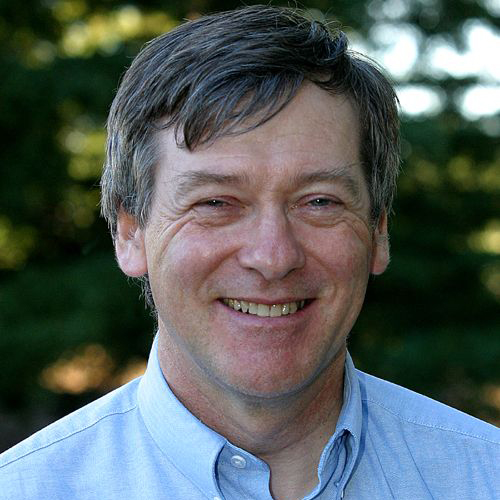 Roger Blandford took his BA, MA and PhD degrees at Cambridge University. Following postdoctoral research at Cambridge, Princeton and Berkeley he took up a faculty position at Caltech in 1976 where he was appointed as the Richard Chace Tolman Professor of Theoretical Astrophysics in 1989. In 2003 He moved to Stanford University to become the first Director of the Kavli Institute for Particle Astrophysics and Cosmology and the Luke Blossom Chair in the School of Humanities and Science. His research interests include black hole astrophysics, cosmology, gravitational lensing, cosmic ray physics and compact stars. He is a Fellow of the Royal Society, the American Academy of Arts and Sciences, the American PhysicalSociety and a Member of the National Academy of Sciences. He recently chaired a two year National Academy of Sciences Decadal Survey of Astronomy and Astrophysics.
Roger Blandford took his BA, MA and PhD degrees at Cambridge University. Following postdoctoral research at Cambridge, Princeton and Berkeley he took up a faculty position at Caltech in 1976 where he was appointed as the Richard Chace Tolman Professor of Theoretical Astrophysics in 1989. In 2003 He moved to Stanford University to become the first Director of the Kavli Institute for Particle Astrophysics and Cosmology and the Luke Blossom Chair in the School of Humanities and Science. His research interests include black hole astrophysics, cosmology, gravitational lensing, cosmic ray physics and compact stars. He is a Fellow of the Royal Society, the American Academy of Arts and Sciences, the American PhysicalSociety and a Member of the National Academy of Sciences. He recently chaired a two year National Academy of Sciences Decadal Survey of Astronomy and Astrophysics. 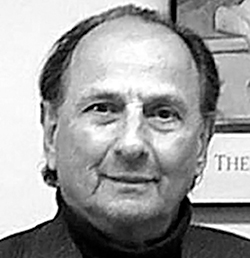 Ken Eisenthal obtained an MA in Physics and a Ph.D. in Chemical Physics from Harvard University. An NIH Postdoctoral position at UCLA followed where he worked with Bill McMillan and Mostafa El-Sayed. After a period as a research scientist, Ken has been a Professor of Chemistry at Columbia University since 1975. His research is in the study of equilibrium and dynamical properties of molecules at interfaces. His experiments are a unique combination of ultrafast (femtosecond) and surface-selective capabilities. Ken’s scientific activities over the years have been recognized in various ways, among which are the ACS Hildebrand Award in Theoretical and Experimental Chemistry of Liquids, the ACS Adamson award for Distinguished Service to Chemistry, election to the National Academy of Sciences, the Bryce Crawford Award in Molecular Spectroscopy, the Hinshelwood Professor and Lectures at Oxford University, the Troisieme Cycle Distinguished Lecturer in Switzerland, various other named lectureships, Fellow of the American Physical Society, Guggenheim Fellow, and visiting professor at universities at home and abroad, including a Visiting Miller Professorship in 1989.
Ken Eisenthal obtained an MA in Physics and a Ph.D. in Chemical Physics from Harvard University. An NIH Postdoctoral position at UCLA followed where he worked with Bill McMillan and Mostafa El-Sayed. After a period as a research scientist, Ken has been a Professor of Chemistry at Columbia University since 1975. His research is in the study of equilibrium and dynamical properties of molecules at interfaces. His experiments are a unique combination of ultrafast (femtosecond) and surface-selective capabilities. Ken’s scientific activities over the years have been recognized in various ways, among which are the ACS Hildebrand Award in Theoretical and Experimental Chemistry of Liquids, the ACS Adamson award for Distinguished Service to Chemistry, election to the National Academy of Sciences, the Bryce Crawford Award in Molecular Spectroscopy, the Hinshelwood Professor and Lectures at Oxford University, the Troisieme Cycle Distinguished Lecturer in Switzerland, various other named lectureships, Fellow of the American Physical Society, Guggenheim Fellow, and visiting professor at universities at home and abroad, including a Visiting Miller Professorship in 1989. 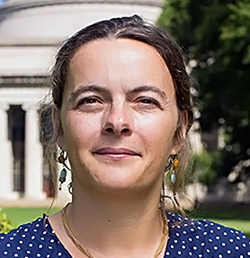 Alice Guionnet is a French mathematician who works at the Massachusetts Institute of technology, on leave from the Centre National de Recherche Scientifique. She studied at the Ecole Normale Supérieure and received her PhD from Université Paris-Sud in 1995, under Professor Gerard Ben Arous. She works in probability theory, on a program related to operator algebra theory and mathematical physics, making important contributions in random matrix theory, including large deviations, topological expansions, universality but also in the more classical study of their spectrum and eigenvectors. Alice won numerous awards, including the Oberwolfach prize in 1999, the Rollo Davidson prize in 2003, a Visiting Miller Professorship in 2006, the Loève prize in 2009, the CNRS Silver medal in 2010. She became a Simons Investigator in 2012.
Alice Guionnet is a French mathematician who works at the Massachusetts Institute of technology, on leave from the Centre National de Recherche Scientifique. She studied at the Ecole Normale Supérieure and received her PhD from Université Paris-Sud in 1995, under Professor Gerard Ben Arous. She works in probability theory, on a program related to operator algebra theory and mathematical physics, making important contributions in random matrix theory, including large deviations, topological expansions, universality but also in the more classical study of their spectrum and eigenvectors. Alice won numerous awards, including the Oberwolfach prize in 1999, the Rollo Davidson prize in 2003, a Visiting Miller Professorship in 2006, the Loève prize in 2009, the CNRS Silver medal in 2010. She became a Simons Investigator in 2012.  L. Mahadevan spent his undergraduate years at IIT-Madras, India, and obtained his Ph.D. at Stanford University, CA. He started his independent career at MIT, and following that was the inaugural Schlumberger Professor of Complex Physical Systems in the Department of Applied Mathematics and Theoretical Physics at the University of Cambridge and a fellow of Trinity. At Harvard University since 2003, he is currently the England de Valpine Professor of Applied Mathematics, of Organismic and Evolutionary Biology and of Physics, and an Associate Director of the NSF Science and Technology Center on Brains, Minds and Machines. His work centers around understanding shape, motion and flow in physical and biological systems, on scales that range from the macromolecular to the tectonic, using experimental, theoretical, and computational approaches. He has contributed to the understanding of many basic patterns and instabilities in soft condensed matter systems, and has developed theories and scaling relationships for the dynamics of soft interfaces, the statistical and continuum mechanics of polymers, colloids and gels, the dynamics of plant growth and movement, the dynamics of animal morphogenesis and autonomous locomotion etc. He is the recipient of various awards including a MacArthur Fellowship (2009), and was a Visiting Miller Professor at the University of California, Berkeley (2006-07) - a time he remembers very fondly.
L. Mahadevan spent his undergraduate years at IIT-Madras, India, and obtained his Ph.D. at Stanford University, CA. He started his independent career at MIT, and following that was the inaugural Schlumberger Professor of Complex Physical Systems in the Department of Applied Mathematics and Theoretical Physics at the University of Cambridge and a fellow of Trinity. At Harvard University since 2003, he is currently the England de Valpine Professor of Applied Mathematics, of Organismic and Evolutionary Biology and of Physics, and an Associate Director of the NSF Science and Technology Center on Brains, Minds and Machines. His work centers around understanding shape, motion and flow in physical and biological systems, on scales that range from the macromolecular to the tectonic, using experimental, theoretical, and computational approaches. He has contributed to the understanding of many basic patterns and instabilities in soft condensed matter systems, and has developed theories and scaling relationships for the dynamics of soft interfaces, the statistical and continuum mechanics of polymers, colloids and gels, the dynamics of plant growth and movement, the dynamics of animal morphogenesis and autonomous locomotion etc. He is the recipient of various awards including a MacArthur Fellowship (2009), and was a Visiting Miller Professor at the University of California, Berkeley (2006-07) - a time he remembers very fondly. 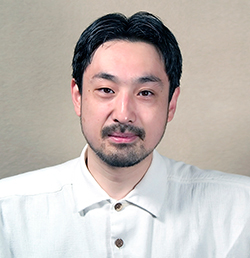 Ryosuke Motani is an evolutionary biologist and a geologist with an emphasis on the evolution and ecology of fossil vertebrates. Having been born in Japan, he attended the University of Tokyo (BSc, Geology) before enrolling in the University of Toronto (Ph.D., Zoology, 1997). He worked for the University of Oregon for two years and moved to the University of California, Davis, where he holds a professor appointment in the Department of Earth and Planetary Sciences. He was a Miller Fellow from 1997-99. His awards include AS Romer Prize from the Society of Vertebrate Paleontology (1997), NSF Career Awards (2003), Gakujutsu Prize from the Palaeontological Society of Japan (2005), and Minister’s Commendation for Science and Technology: The Young Scientists' Prize from the Ministry of Education, Culture, Sports, Science and Technology, Japan (2007). His overarching research theme is how physical, chemical, and physiological constraints carved the evolution of vertebrate animals in the past, and are carving them today. He currently studies the evolution of marine vertebrates during and after the extreme global warming in the Early Triassic, in a trial to decipher how environmental changes drove evolution through physiology.
Ryosuke Motani is an evolutionary biologist and a geologist with an emphasis on the evolution and ecology of fossil vertebrates. Having been born in Japan, he attended the University of Tokyo (BSc, Geology) before enrolling in the University of Toronto (Ph.D., Zoology, 1997). He worked for the University of Oregon for two years and moved to the University of California, Davis, where he holds a professor appointment in the Department of Earth and Planetary Sciences. He was a Miller Fellow from 1997-99. His awards include AS Romer Prize from the Society of Vertebrate Paleontology (1997), NSF Career Awards (2003), Gakujutsu Prize from the Palaeontological Society of Japan (2005), and Minister’s Commendation for Science and Technology: The Young Scientists' Prize from the Ministry of Education, Culture, Sports, Science and Technology, Japan (2007). His overarching research theme is how physical, chemical, and physiological constraints carved the evolution of vertebrate animals in the past, and are carving them today. He currently studies the evolution of marine vertebrates during and after the extreme global warming in the Early Triassic, in a trial to decipher how environmental changes drove evolution through physiology. Sarah (Sally) P. Otto. CRC Professor (Tier 1), Department of Zoology & Director, Biodiversity Research Centre, University of British Columbia. She received her degrees from Stanford University and was a Miller Fellow from 1992-94. She is known for her theoretical studies investigating how biological systems evolve, using models to investigate the selective forces acting on genetic systems (recombination, ploidy level, gene duplications) and mating systems (sexual vs asexual reproduction, sexual selection, floral reproductive strategies).Using mathematical modeling and experimental evolution, Sally’s research into the evolutionary forces leading to biological diversity has resulted in over 150 publications and a book. She has served as founding member and Secretary of the Canadian Society of Ecology and Evolution, Vice President of the Society for the Study of Evolution, the American Society of Naturalists, and the European Society of Evolutionary Biology, Council member for the Society for the Study of Evolution and the American Genetic Association, and member of several editorial boards. Awards include a MacArthur Fellowship, a Guggenheim Fellowship, the Steacie Prize (National Research Council, Canada), and fellowship in the Royal Society of Canada and the National Academy of Sciences.
Sarah (Sally) P. Otto. CRC Professor (Tier 1), Department of Zoology & Director, Biodiversity Research Centre, University of British Columbia. She received her degrees from Stanford University and was a Miller Fellow from 1992-94. She is known for her theoretical studies investigating how biological systems evolve, using models to investigate the selective forces acting on genetic systems (recombination, ploidy level, gene duplications) and mating systems (sexual vs asexual reproduction, sexual selection, floral reproductive strategies).Using mathematical modeling and experimental evolution, Sally’s research into the evolutionary forces leading to biological diversity has resulted in over 150 publications and a book. She has served as founding member and Secretary of the Canadian Society of Ecology and Evolution, Vice President of the Society for the Study of Evolution, the American Society of Naturalists, and the European Society of Evolutionary Biology, Council member for the Society for the Study of Evolution and the American Genetic Association, and member of several editorial boards. Awards include a MacArthur Fellowship, a Guggenheim Fellowship, the Steacie Prize (National Research Council, Canada), and fellowship in the Royal Society of Canada and the National Academy of Sciences.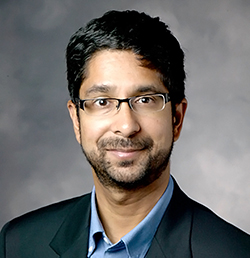 Vijay Pande is currently the Director of the Program in Biophysics and the Camille and Henry Dreyfus Professor of Chemistry and, by courtesy, of Structural Biology and of Computer Science at Stanford University. Vijay received a BA in Physics from Princeton University in 1992 and Ph.D. in physics from MIT in 1995. He was a Miller Fellow from 1996-98. His current research centers on the development and application of novel grid computing simulation techniques to address problems in chemical biology. In particular, he has pioneered novel distributed computing methodology to break fundamental barriers in the simulation of kinetics and thermodynamics of proteins and nucleic acids. He has won numerous awards, including the Michael and Kate Bárány Award for Young Investigators from Biophysical Society (2012), Thomas Kuhn Paradigm Shift Award, American Chemical Society (2010), Fellow of the American Physical Society (2008), Irving Sigal Young Investigator Award from the Protein Society (2006), the MIT Indus Global Technovator’s Award (2004), a Henry and Camile Dreyfus Teacher-Scholar award (2003), being named to MIT’s TR100 (2002), and named a Frederick E. Terman Fellow (2002).
Vijay Pande is currently the Director of the Program in Biophysics and the Camille and Henry Dreyfus Professor of Chemistry and, by courtesy, of Structural Biology and of Computer Science at Stanford University. Vijay received a BA in Physics from Princeton University in 1992 and Ph.D. in physics from MIT in 1995. He was a Miller Fellow from 1996-98. His current research centers on the development and application of novel grid computing simulation techniques to address problems in chemical biology. In particular, he has pioneered novel distributed computing methodology to break fundamental barriers in the simulation of kinetics and thermodynamics of proteins and nucleic acids. He has won numerous awards, including the Michael and Kate Bárány Award for Young Investigators from Biophysical Society (2012), Thomas Kuhn Paradigm Shift Award, American Chemical Society (2010), Fellow of the American Physical Society (2008), Irving Sigal Young Investigator Award from the Protein Society (2006), the MIT Indus Global Technovator’s Award (2004), a Henry and Camile Dreyfus Teacher-Scholar award (2003), being named to MIT’s TR100 (2002), and named a Frederick E. Terman Fellow (2002).